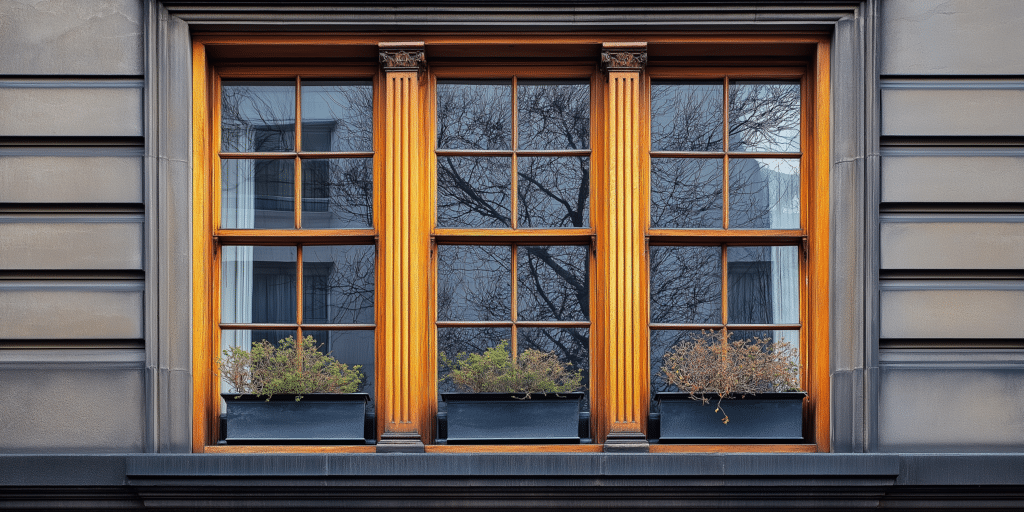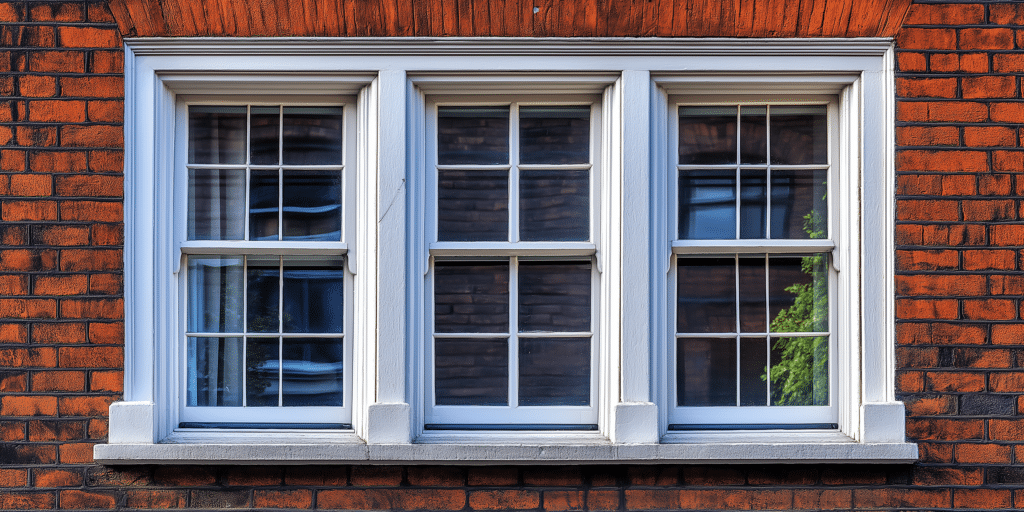Introduction to Sash Window Sizing

Proper sash window sizing is fundamental to achieving a harmonious balance between design and functionality. An ideal fit can enhance energy efficiency, reduce draughts, and prevent excessive wear on components. According to a sash window expert, “Precision in window measurement is the foundation for successful installation, directly influencing insulation and energy costs”.
Start by considering the type of sash window—single-hung, double-hung, or a more intricate design like Georgian or Victorian—as each style has unique sizing requirements. If your project involves a listed or period property, you must also adhere to building regulations to maintain historical integrity while achieving optimal energy efficiency.
Determining Standard Sash Window Sizes
Typically, sash window widths range from 24 to 48 inches (600mm to 1200mm) and heights from 36 to 72 inches (900mm to 1800mm). Variations often stem from architectural preferences and window styles. For instance, single-hung sash windows, with a single movable sash, generally fit narrower spaces, while double-hung sash windows accommodate larger openings, offering increased ventilation and ease of cleaning.
To confirm if a standard size is appropriate, measure the window space’s height, width, and depth. If the frame dimensions fall outside these standard sizes, custom sizing becomes necessary to achieve a seamless fit and maintain room aesthetics.
Measuring for Custom Sash Window Sizes
Start with essential tools such as a high-quality measuring tape, a spirit level, and a notebook to record measurements. Experts recommend rechecking each dimension to avoid adjustments later, noting that even slight deviations can result in poor insulation and increased energy bills.
Depth is critical for frame compatibility and insulation, impacting how well your window can prevent draughts and moisture ingress. Account for side clearance to ensure smooth operation and prevent weathering issues. Should you allow space for weatherproofing? Adding allowances for draught strips or sealants will ensure that your sash window withstands seasonal temperature variations, enhancing comfort and longevity.
Key Considerations in Sash Window Sizing for Period Homes

Sizing sash windows for period homes can be challenging due to architectural variations across eras, such as Georgian, Victorian, or Edwardian styles. Why do historical homes often require custom sizing? Older properties frequently feature non-standard window openings, and an exact fit preserves architectural heritage while meeting modern performance standards. A restoration expert notes, “Sticking to original dimensions maintains the heritage charm while ensuring practical functionality”.
Local building codes, especially for listed buildings, may further influence sash windows’ design, material, and size. Manufacturers often provide traditional sash window replicas that replicate the aesthetics of older homes. Using authentic materials and period-appropriate mouldings helps preserve the property’s character while boosting its thermal efficiency.
Common Mistakes in Sash Window Measurement and Sizing
Common errors include inaccurate height and width measurements, neglecting irregularities, and overlooking depth. An incorrect sash window size can lead to issues like draughts, leaks, and poor operability, impacting energy efficiency and comfort.
A seasoned installer advises double-checking each measurement before ordering to avoid costly adjustments, especially in custom projects. Professionals are trained to spot potential challenges, ensuring precise measurements and seamless fit for each sash window component.
Understanding and Choosing Sash Window Styles by Size Needs
Different styles—such as Georgian, Victorian, Queen Anne, and even Gothic sash windows—each have unique design elements that affect measurements. Georgian sash windows, for example, feature symmetrical panes that necessitate proportional adjustments.
Experts recommend selecting a style that matches the dimensions of the window opening, enhancing the architectural appeal of your property. While Georgian windows suit grander facades, Victorian and Edwardian styles work well with modest openings, making style choices vital for both aesthetic harmony and functionality.
Regional and International Sizing Standards for Sash Windows

In the UK, sash window dimensions follow specific architectural norms that differ from standards in the US or EU. Importing sash windows from another region can lead to sizing inconsistencies, impacting insulation and installation. For regions with extreme climates, local weather conditions heavily influence window sizing and material choice; colder climates favour snug fits with deeper frames, while warmer regions prioritise ventilation over insulation.
Optimising Sash Window Sizing for Energy Efficiency
A properly sized window minimises heat loss and draughts, which is crucial for indoor comfort. Experts highlight that “a well-sized sash window with double or triple glazing drastically improves energy efficiency,” reducing energy bills in the long term.
Options like Low-E glass, argon-filled panes, and double glazing improve insulation, helping homes retain warmth in winter and stay cool in summer. Deeper frames accommodate thicker glass or added insulation materials, which are key for projects prioritising thermal efficiency.
Custom Sizing Solutions for Unique Architectural Designs
Custom sash windows are vital to achieving a precise fit for homes with distinctive features—such as arched or round frames. Tailored windows ensure a snug fit for irregular dimensions, reducing air leaks and moisture ingress. Experts note that “custom sash windows enable cohesive design and structural integrity, maintaining both appearance and functionality”. Bespoke options ensure architectural consistency and optimise the window’s practical benefits.
Ensuring Accuracy in Measuring and Ordering Sash Windows

Using professional-grade tools and rechecking each dimension is essential. Materials like wood may expand or contract with seasonal changes, so leaving a small tolerance prevents potential issues. Digital tools minimise human error, ensuring reliable measurements. Some manufacturers offer 3D models for complex projects, which help confirm dimensions and visualise installation outcomes, which is essential for custom sash windows.
Final Tips for Achieving Perfect Sash Window Sizing
A well-planned approach saves time, reduces errors, and achieves a high-quality fit, particularly in custom projects. To avoid issues post-installation, include hardware clearances, space for draught-proofing, and interior finishes. Flush or recessed settings affect specifications, impacting appearance and insulation properties. An inspection verifies weatherproofing, optimising performance and durability over time.
Conclusion: Enhancing Your Home with the Perfect Sash Window Fit
Properly sized sash windows enhance both exterior and interior aesthetics, elevating the architectural value. Professionals bring expertise that ensures durability, functionality, and historical alignment.
Bespoke sizing offers unique appeal, especially in period homes where an authentic look can increase market value. Beyond aesthetics, a well-fitted sash window requires less maintenance, enhances energy efficiency, and provides enduring visual appeal.




